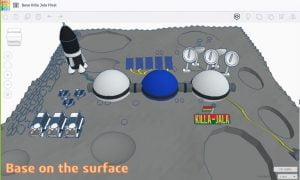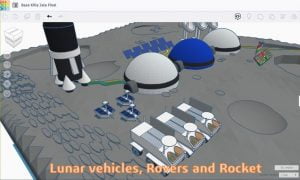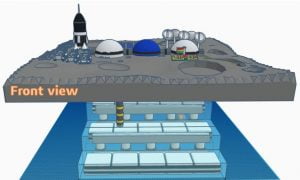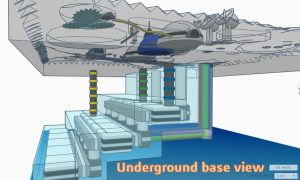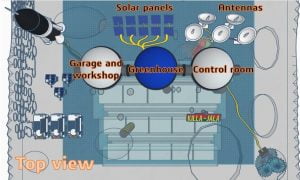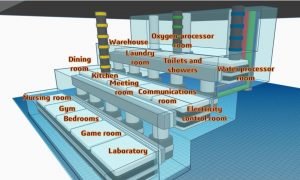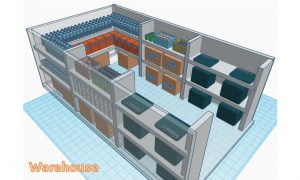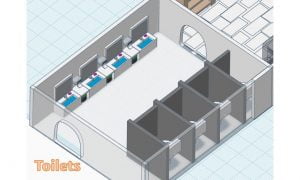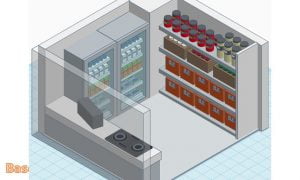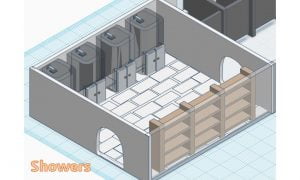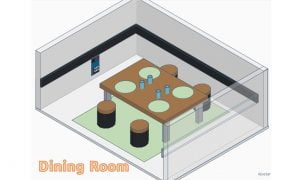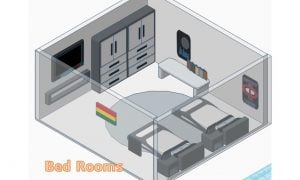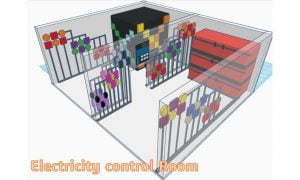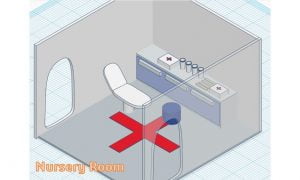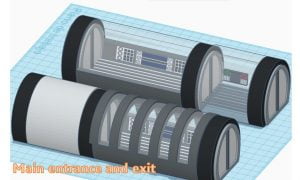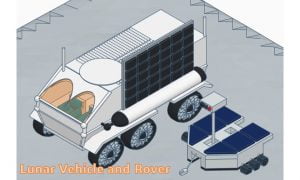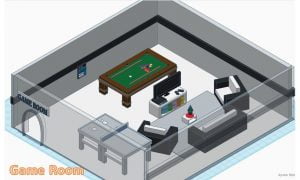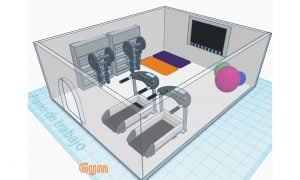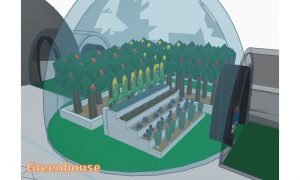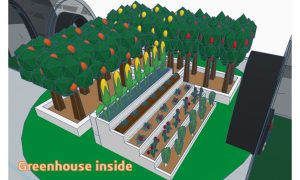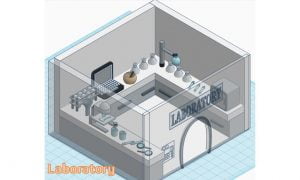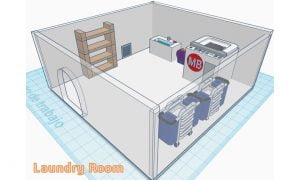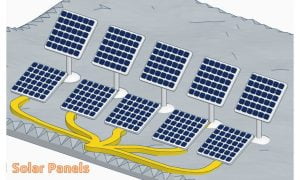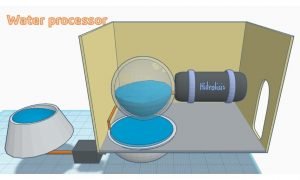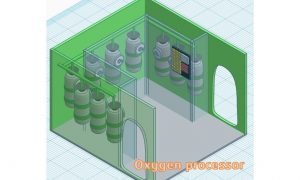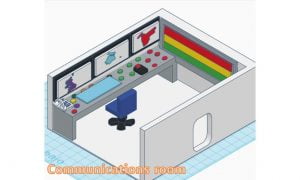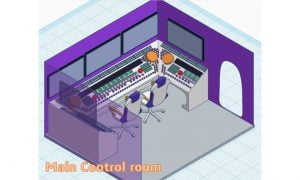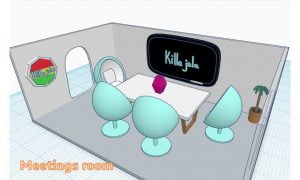Moon Camp Explorers Gallery 2020-2021
In Moon Camp Explorers each team’s mission is to 3D design a complete Moon Camp using Tinkercad. They also have to explain how they will use local resources, protect astronauts from the dangerous of space and describe the living and working facilities.
Team: Killa Jala
FEPPA San Calixto La Paz Bolivia 13 Third Place – Non-ESA Member states
External link for 3d
|
Project description
The name of our base is in the native language of Bolivia, Quechua “Killa Jala” and means “the one who flies to the moon.” Our moon base is for four crewmembers who will stay for six months. It has what is necessary for that time and in case of the lack of some element there will be communication with the Earth. The lunar base is designed to withstand extreme temperatures and a structure to keep crops in good condition, as well as water, energy and oxygen. We chose that the base have the majority of underground rooms, since it provides protection against radiation and micrometeorites, with a layer of five meters, in addition to helping with temperature, it would also be connected to the surface part of the base. This part is composed of: Control room over the entire lunar base, communication room (connected to the communication antennas on the surface), meeting room, laboratory, infirmary, bathrooms, kitchenware, electricity control room, water control room, oxygen control room, tool storage, food storage, dining room, bedrooms, entertainment room and gym. Anti-meteorites, magnetic fields, radiation shielding and lunar dust, cover the part on the surface. It is designed for crewmembers to visit the area only for outdoor investigations on the Moon and to have contact with the greenhouse. This part involves rockets, communication antennas, entry and exit to the base, greenhouse, anti-meteorites, solar panels and Rovers. |
|||
|
Where do you want to build your Moon Camp?
Close to the Lunar Poles Why did you choose this location?
Because this is the closest source to process water on the Moon. This is essential for humans to feed themselves and process their crops. It is also a good place to investigate craters, materials and others. How do you plan to build your Moon Camp? Which materials would you use?
We plan to build the camp with necessary machines controlled from Earth. This process would last from 10 to 15 years depending on the resources and the transportation time of each necessary thing. The materials to be used: As a base, a lunar concrete will be developed, the use of water will not be necessary since liquid sulfur will be used instead of water. Moon dust with epoxy resin and carbon nanotubes will also be used to prevent transport from the Earth to the Moon, facilitating construction. To avoid air loss, geotextile sheets will be used in the underground part. Explain how your Moon Camp will provide the astronauts with:
|
|||
|
Water
|
Food
|
Electricity
|
Air
|
|
When exploring the terrain there will be ice (thanks to the location), it may be from a crater. When collecting, it will melt by the engine (it will be located underground in that area) which is composed of hydrolysis, which will also filter it and is related to energy. Finally it will be ready for consumption. Recycled water can be obtained from wastewater with a process of using filter materials and chemical reactions for purification. Moreover, when mixing oxygen and hydrogen, but in this process an energy contribution will be needed that we will use from the energy room. |
Food will be provided thanks to the crops planted in the greenhouse. Each fruit and vegetable has vitamins so that the crew have a good diet on the Moon (vitamin C, B3, B6, etc.) They have a variety of seeds so that the types of crops change according to the time of their development. They will also be nourished with energy bars, variety nuts, and canned food. Canned food will be carbohydrates, protein and low in fat. Everything so that their feeding is not repeated and they take care of their feeding at the same time. |
We’d produce energy in two ways: |
The layer on the surface is composed of between 40 and 50% oxygen; however, we could not breathe it as it is made up of various chemical compounds, especially oxide. Therefore, we created an oxygen production plant. The process it performs is the extraction of oxygen (such as molten salt electrolysis); lunar dust is put into a metal basket with molten calcium chloride salt heated to 950 °. After applying electrical current to the metal basket, it is possible to extract oxygen, and use the regolith. It is also supplied with plants from the greenhouse. |
|
Describe a day on the Moon for one of your Moon Camp astronauts
They will start the day very early. First they will enlist and then two crewmembers will have to go to the power or electricity zone to fill the area with the “heat storage bricks”, so they will have energy for the whole day. The other two crew members will be in charge of setting up the training room and watering the plants. Finishing exercising they make breakfast, they would eat a very nutritious breakfast, fruit juice, protein bars and nuts. Afterwards, two crewmembers would leave the lunar base and go to their respective rooms to put on their suits, while the other two crew members go to the laboratory to investigate samples of blue bodies, the constellations, samples of the lunar floor and they would do experiments with elements they find in the Moon. Continuing with the day they would go to lunch, two crew members prepare lunch and set the table, meanwhile the other two crewmembers check that the entire lunar base is in order. After eating, the four crew members, as a team, would collect and tidy up the whole place. Continuing the day, two crewmembers were in charge of going with the rover to take samples for the next day, the other two would give a report to the ground of everything that happened in the communications room. Finally they will prepare their dinner and before going to sleep they will have time for leisure activities (reading, writing, playing, washing up, talking). |
|||


